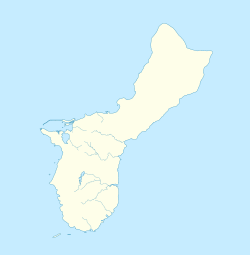Torre Water Catchment | |
 | |
| Location | Hatsuho Golf Course, Yigo (Piga), Guam |
|---|---|
| Coordinates | 13°34′55″N144°51′57″E / 13.58194°N 144.86583°E |
| Area | less than one acre |
| Built | 1916 |
| Built by | Torre, Juan dela |
| MPS | Water Catchments MPS |
| NRHP reference No. | 94001311 [1] |
| Added to NRHP | November 14, 1994 |
The Torre Water Catchment, also known as the Hatsuho Water Catchment, is located on what is now Hatsuho Golf Course in Yigo (Piga), Guam. It is a historic site that was listed on the U.S. National Register of Historic Places in 1994. [1] The catchment has an octagonal-shaped exterior made of concrete around limestone gravel and cobbles and has a plastered cylindrical interior. It is 5.19 metres (17.0 ft) in diameter and its walls vary from .27 to .46 meters thick. It was built in approximately 1916 by a farmer, Juan dela Torre, to provide water when needed, in a northern area of Guam that is far from regular water supplies. [2]

